Foot-and-Mouth Disease—Are Mass Animal Burials Causing Water Contamination in South Korea?
As animal bodies pile up, public fears water sources will become contaminated.
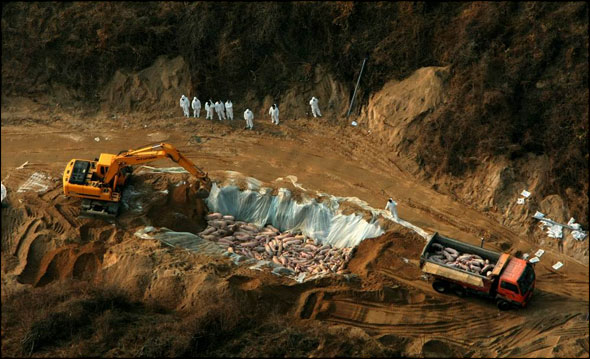
Millions of animals have been killed or vaccinated in South Korea over the past six weeks in an effort to contain the nation’s largest outbreak of foot-and-mouth disease.
As the virus sweeps South Korea’s livestock industry, government officials have ordered the burial of culled animals. The consequences to groundwater from the slaughter and burial of so many animals have emerged as a public concern, heightened by reports of biological contamination.
For instance, The Korea Times reported last week that tap water in a village in Gyeonggi province was contaminated with blood. The news agency reported that residents believe the contamination was related to a livestock slaughter on December 31, when nearly 1,000 pigs were buried alive in response to an outbreak of foot-and-mouth disease at a nearby farm.
Foot-and-mouth disease does not infect humans, but is highly communicable between cloven-hoofed animals such as pigs, cows, goats, sheep, and deer. Humans and other animals, however, can still carry the virus on exposed materials such as contaminated equipment, facilities, cars, and clothing.
The disease can also be transmitted to susceptible animals through contaminated food and drinking sources.
More than 1.4 million pigs and cows have been buried alive throughout the country, reports Reuters. However, the most disturbing effect of the national campaign is the bloody tap water reported by The Korea Times.
Reports of Contaminated Water
Typically, animals are killed before disposal, but with the outbreak spreading so fast, local authorities did not have the slaughterhouse capacity to follow the rules.
Instead, animals within a 500-meter radius of the infected farm were dumped into a 5-meter-deep pit that was lined with double-folded vinyl.
“It’s possible that the vinyl could be torn by animals struggling to survive,” a quarantine officer told The Korea Times.
Residents in the village, located in a rural area near the northern city of Paju, are concerned that the buried animals contaminated their groundwater supply. It is unclear how many homes were affected and whether the bloody tap water came from private wells or via a public treatment system.
Korean Official Talks to Circle of Blue
In an interview with Circle of Blue, a Korean government official confirmed that a farm drainage creek had been contaminated by the live burial near the city of Paju. But the same official denied that blood had run through the taps.
The official—who works at the Ministry of Public Administration and Security and asked to be left anonymous since he does not have the authority to speak publicly about the matter—told Circle of Blue that groundwater is regularly tested via government mandates and that drinking water had not been contaminated by the bodily fluids of culled pigs and cows.
The official said that mass slaughter is the most effective means for controlling such a large outbreak. He also said that killing and burying animals on-site is consistent with accepted public health practices.
The Asia-Pacific Business & Technology Report published a similar story from the Gangwon province—more than three hours away—where more than a thousand pigs were buried on January 4. According to the report, “blood from the bodies ran into underground water aquifers which supply local drinking water.”
— Government Official
Ministry of Public Administration and Security
There have been more than 115 confirmed cases of foot-and-mouth disease in South Korea since November 29. More than 1.4 million pigs and cattle exposed to the highly contagious virus have been or will be slaughtered. To assist in the response, the government has deployed 68,000 troops and 770 pieces of equipment—including excavators—to assist in culling operations that will destroy 10 percent of the country’s pigs and cows.
Severe Losses
More than a million cattle have been vaccinated since December 25, and the government is preparing vaccines for 2.1 million livestock in hopes of containing the virus.
While the virus does not usually kill the animal or affect food safety, it debilitates milk and meat production, causing severe economic losses for farmers, which are estimated to be nearly $US 900 million so far, according to The Korea Times.
There have been confirmed cases in Gyeonggi, North Gyeongsang, Gangwon, North and South Chungcheong provinces, as well as the city of Incheon.
Though the bloody tap water is an extraordinary event, groundwater contamination from animal disposal is not.
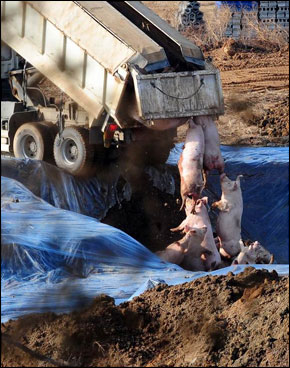
Just three months ago, a local politician with the opposition party cited a report in The Korea Times from the Ministry of Environment showing groundwater sources near animal burial sites have been classified “undrinkable” due to concentrations of colon bacillus—a bacteria group that includes E. coli—that exceed the legal minimum.
In the United States, regulations for dead animal disposal vary by state. Some states, like Missouri, suggest incineration, composting, or removal to an approved landfill as safer methods than on-farm burial.
The Korea Animal Rights Advocates, a lobby group, argues that the Korean government should have already had a vaccination program in place to prevent an outbreak from happening. The last large-scale outbreak occurred in 2002, when 160,000 animals were slaughtered at a cost of $US 225 million.
***Emails and calls from Circle of Blue to the Paju city government and the Gyeonggi Ministry of Environment were unanswered.
Reporting by Circle of Blue’s Seattle-based Brett Walton and Traverse City-based Aubrey Ann Parker. Reach them at <circleofblue.org/contact or contact Brett Walton directly. Additional reporting by Karl Wasmuth in Seoul, South Korea.
Source: The Korea Times, Reuters, Asia-Pacific Business & Technology Report, AFP
Brett writes about agriculture, energy, infrastructure, and the politics and economics of water in the United States. He also writes the Federal Water Tap, Circle of Blue’s weekly digest of U.S. government water news. He is the winner of two Society of Environmental Journalists reporting awards, one of the top honors in American environmental journalism: first place for explanatory reporting for a series on septic system pollution in the United States(2016) and third place for beat reporting in a small market (2014). He received the Sierra Club’s Distinguished Service Award in 2018. Brett lives in Seattle, where he hikes the mountains and bakes pies. Contact Brett Walton



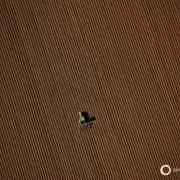

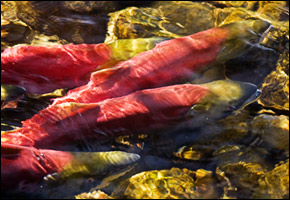



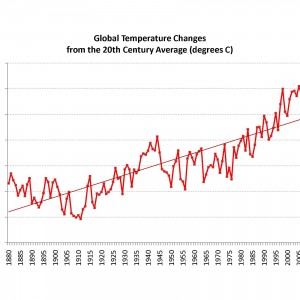
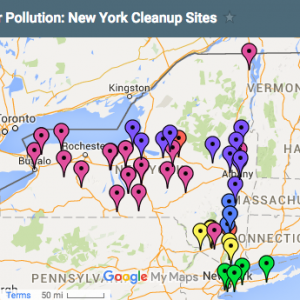
And this is the Southern part of Korea the commercial part that is so arrogant against the northern section and the part under USA pig disease influence !! They seem not to be burning and then containing the acids generated using lime, which would mix with the other materials rapidly. The debacle of UK from Cornwall onward indicated what happens when a government runs down the Min of Ag FF for profit and animal production is amassed in large concentrated units almost dependent on artificial support that is then cut by budget “economists”. Well that is just the dry part wait until the floods. Mexico USA business, UK and BSE here we go again. M D Stagg Hydrology soils Geology